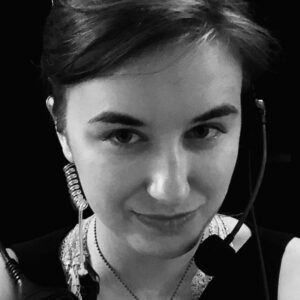
It is becoming common knowledge that the “bedroom studio” is becoming widely popular for those who either want to create recordings or can’t afford studio prices to adjust the ones they already have. Either way, you’re going to need at least the essentials of the bedroom studio to do anything with those recordings.
To stop one of the obvious myths, music is not the only thing being recorded/fixed in a bedroom studio. Audiobooks, podcasts, even short films are widely being done in a small home office or just the bedroom itself these days for those who don’t have all access to grand studios. Much of the essentials are the same though. The first and obvious one being a laptop. The industry standard in a Mac laptop that can operate proficiently. Pick a good one, one that you really like and won’t give your wrists cramps from trying to adjust to the keyboard. This laptop is about to never leave your side. It will go wherever you go.
To record anything you’re going to need a microphone. Which one you should use depends widely on what you are wanting to use it for. What you record a podcast or audio book on, isn’t necessarily the same microphone you use for recording vocals for a song. Though both will be picking up the voice, different microphones pick up vocals drastically differently. Just to get you started though, try to get something with a large diaphragm. These are able to capture a broad range of frequencies as well as subtle nuances so you’ll be getting practice at editing as well.
An audio interface is what makes your microphone talk to your laptop easily. That’s putting it as simply as possible. Without this the quality of any recording you’re trying to do on your phone’s microphone is going to be crap, for lack of better terms. Another thing that will determine your workflow is which DAW (or digital audio workstation) you chose. Each DAW has different features, but all of them are similar in many ways. There are people out there who will tell you that some of the DAWs are better than others, those people would be right. To get started, GarageBand is free and has a simple setup, but industry standard is Pro Tools and Logic Pro.
No matter the environment that you are in, you will need mixing headphones. The great debate of open-back versus closed-back headphones can honestly wait until later. The headphones also don’t matter as much as the acoustical treatment that you are going to need. The sound panels are non-negotiable for many sound mixers, even in bedroom studios. They are crucial for reducing reflections, echos, and low-frequencies.


Janine has always been a part of music and performing. The first show that inspired her to go into theatre was the Velveteen Rabbit which she saw as a child, and Drew works to keep that magic alive in her work. When Drew was accepted into an internship program for audio engineering at a recording studio, she jumped at the opportunity. That was at the start of 2020, and so much has happened since then, both in her career and in the world. Since then, Drew has taken several opportunities to work at recording studios, concerts, festivals, and even large theatres while spending some time on tour. Drew's favorite by far though, has been the chance to work on Broadways and West End shows, as this was a dream come true. Drew is honoured to get to share these experiences from being inside the entertainment industry.
Read Full Profile© 2021 TheatreArtLife. All rights reserved.

Thank you so much for reading, but you have now reached your free article limit for this month.
Our contributors are currently writing more articles for you to enjoy.
To keep reading, all you have to do is become a subscriber and then you can read unlimited articles anytime.
Your investment will help us continue to ignite connections across the globe in live entertainment and build this community for industry professionals.